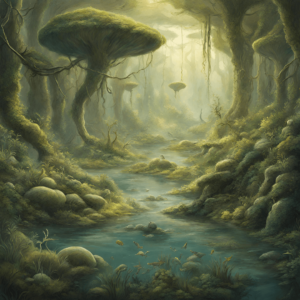
Unveiling the Secrets of an Ancient Ecosystem: Traces of Life Dating Back 3.4 Billion Years
The study of ancient life has always fascinated scientists, fueling their curiosity about the origins of our planet and the organisms that once thrived on it. Over the years, countless discoveries have shed light on the mysteries of the past, and recently, scientists have unveiled yet another extraordinary find: traces of life dating back 3.4 billion years, captivating the scientific community and offering valuable insights into an ancient ecosystem.
Discovering the Fossils
In 2016, a team of researchers stumbled upon the remains of what appeared to be microorganisms in a remote part of Western Australia. These fossils, preserved in layers of ancient microbial mats, provided an unprecedented glimpse into the past, revealing the existence of an ecosystem that thrived billions of years ago. The fossils, known as stromatolites, are intricate structures formed by the growth of microscopic organisms and minerals over time. In this case, they represented the remnants of an ancient microbial community that flourished in a shallow marine environment.
The Significance of the Findings
The discovery of these billion-year-old fossils has immense implications for our understanding of early life on Earth. The ancient ecosystem provides evidence of how life may have existed when our planet was in its infancy. It challenges previous assumptions that life could only thrive under specific conditions, highlighting the adaptability of organisms and potentially broadening our search for life beyond Earth. Additionally, these findings may help scientists better comprehend the processes that set the stage for complex life forms to evolve.
Ancient Life and Earth’s Climate
Studying ancient life can also shed light on the climate of the past and its influence on the development and evolution of organisms. The presence of stromatolites in the ancient ecosystem indicates the availability of light and nutrients, suggesting that Earth’s early climate provided favorable conditions for life to thrive. By examining these fossils and their environment, scientists can reconstruct ancient climate patterns and gain insights into our planet’s history.
Unlocking the Secrets of the Ancient Ecosystem
Analyzing the billion-year-old fossils and the layers of microbial mats surrounding them provides scientists with invaluable data. By studying the microscopic structures within the fossils, they can determine the types of organisms present in the ancient ecosystem. This analysis can offer insights into the biological diversity of early life, helping scientists piece together the intricate puzzle that is Earth’s ancient history.
The Relevance to Modern-Day Life
Understanding the ancient ecosystem and how life adapted and evolved over time can provide valuable lessons for our present-day world. The resilience and adaptability of the organisms that thrived billions of years ago can teach us about survival and the potential for life to persist in challenging environments. Furthermore, these findings offer a humbling reminder of our place in the vast timeline of Earth’s history and the beauty and complexity of the interconnected web of life.
Summary
Unveiling the secrets of an ancient ecosystem through the discovery of billion-year-old fossils has captivated scientists and provided valuable insights into the origins and evolution of life on Earth. The study of these ancient organisms offers glimpses into Earth’s early climate and the adaptability of life, challenging previous assumptions and expanding our understanding of the possibilities for life beyond our planet. As we unravel the mysteries of the past, we gain a deeper appreciation for the complexities and interconnectedness of life on Earth.
The Video Games Industry Faces Major Challenges Amidst Widespread Layoffs

